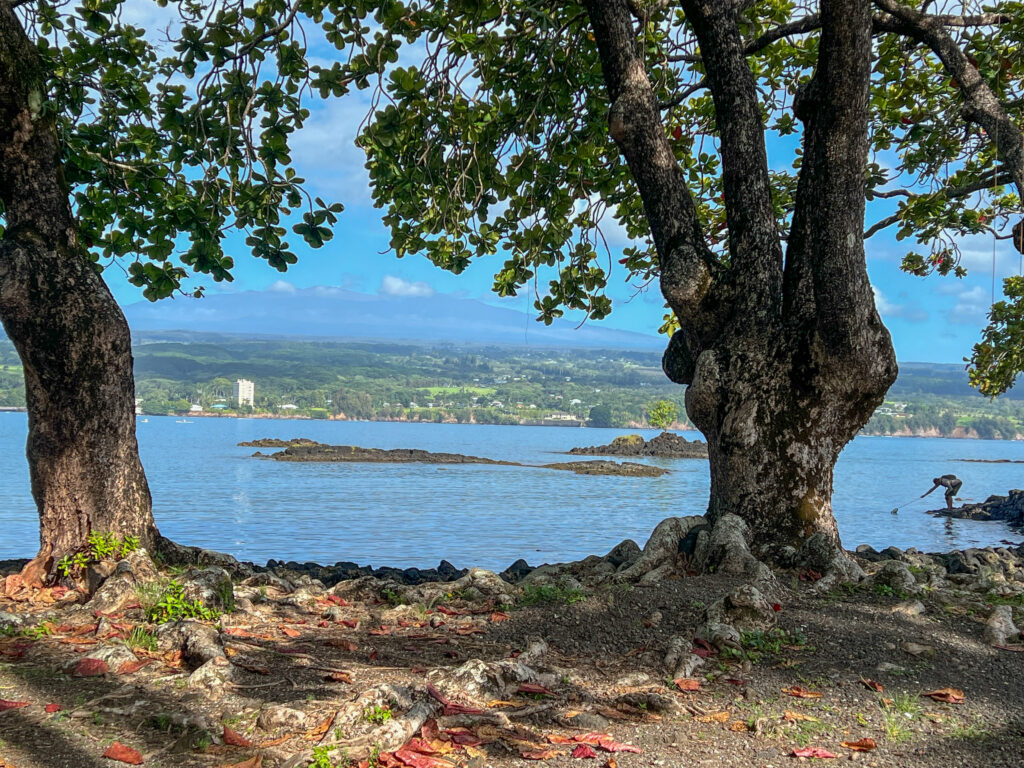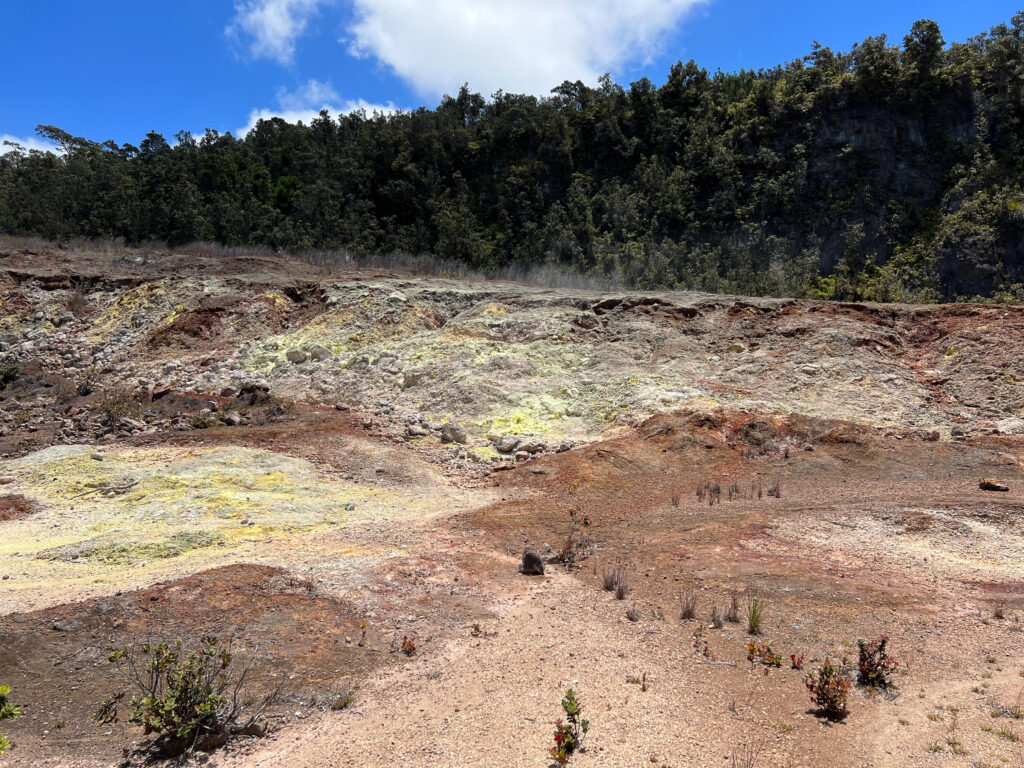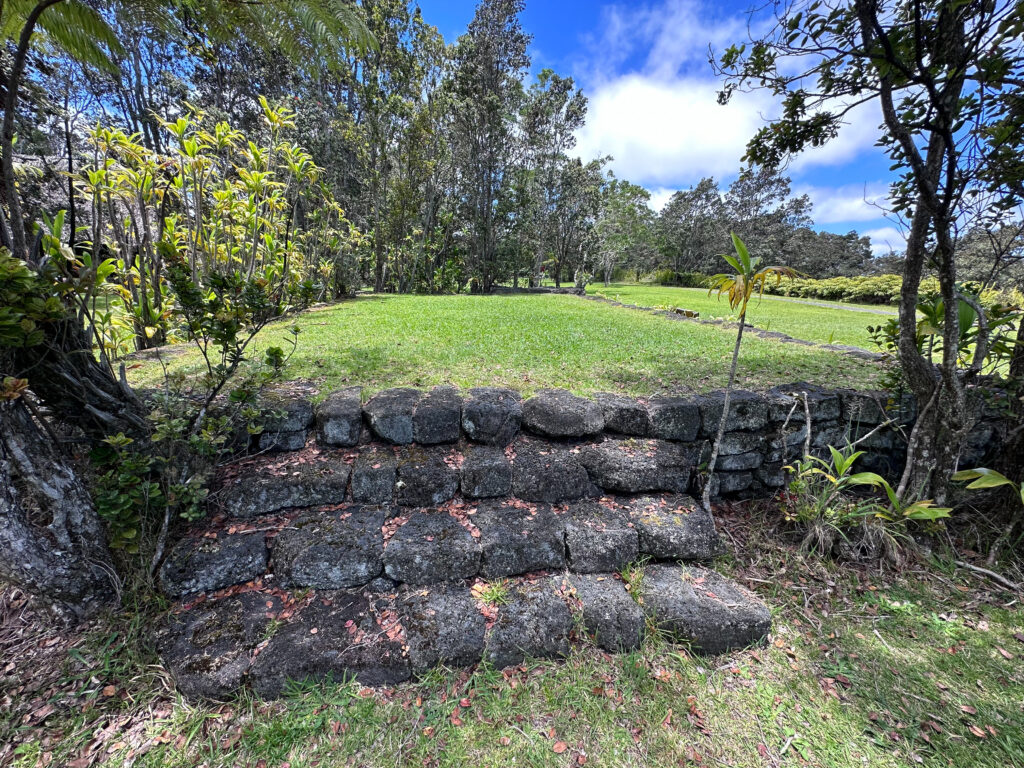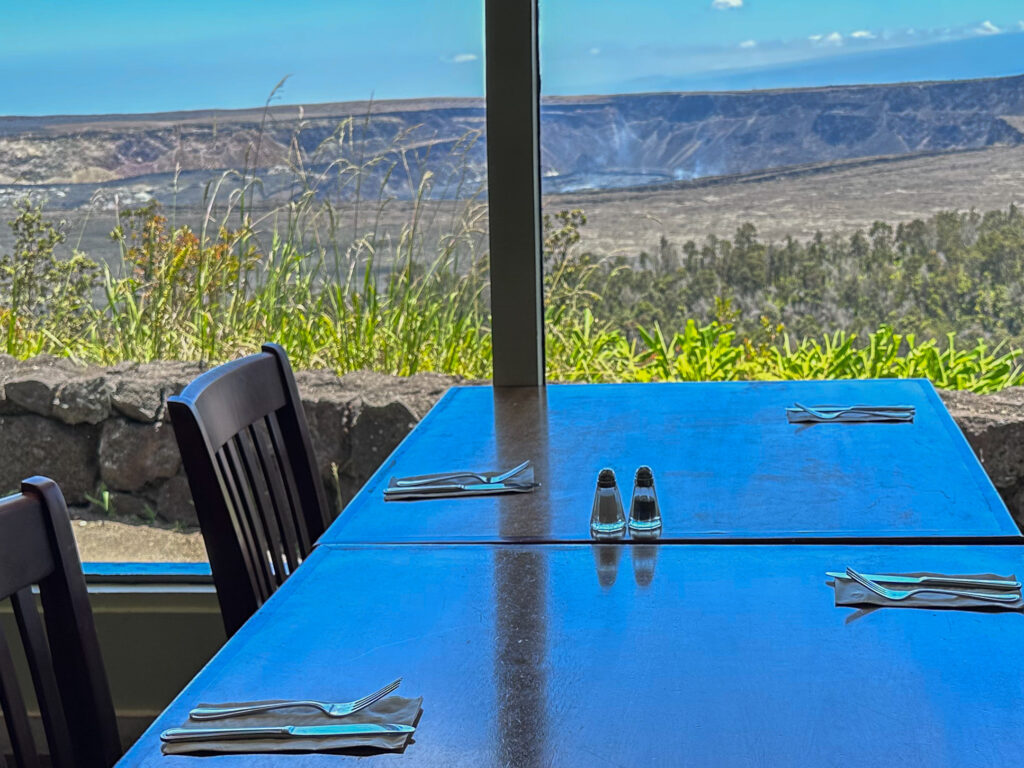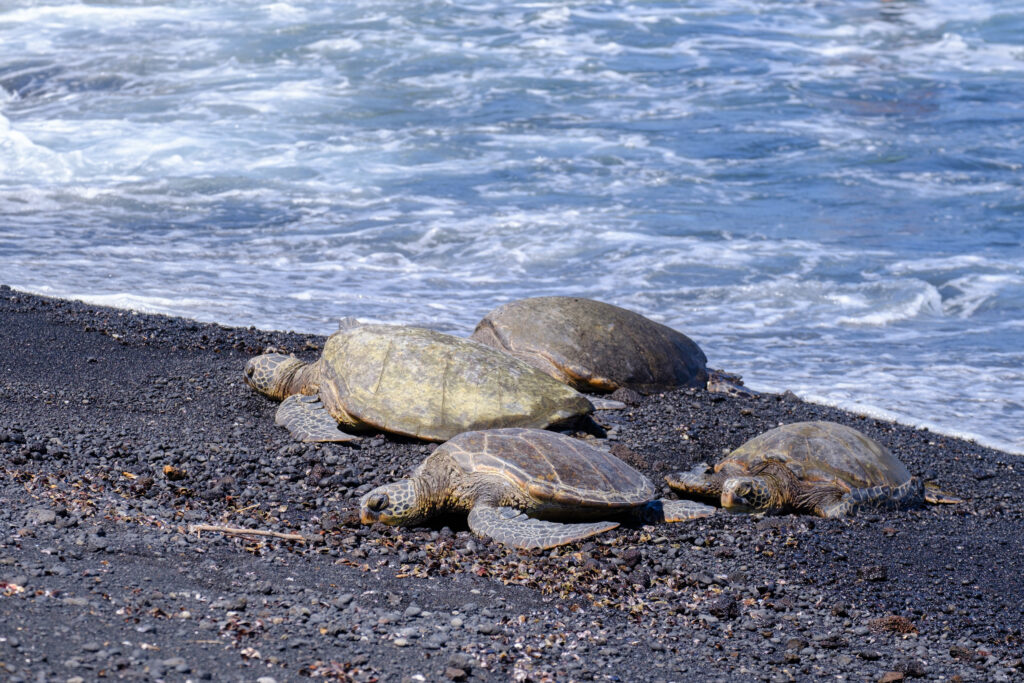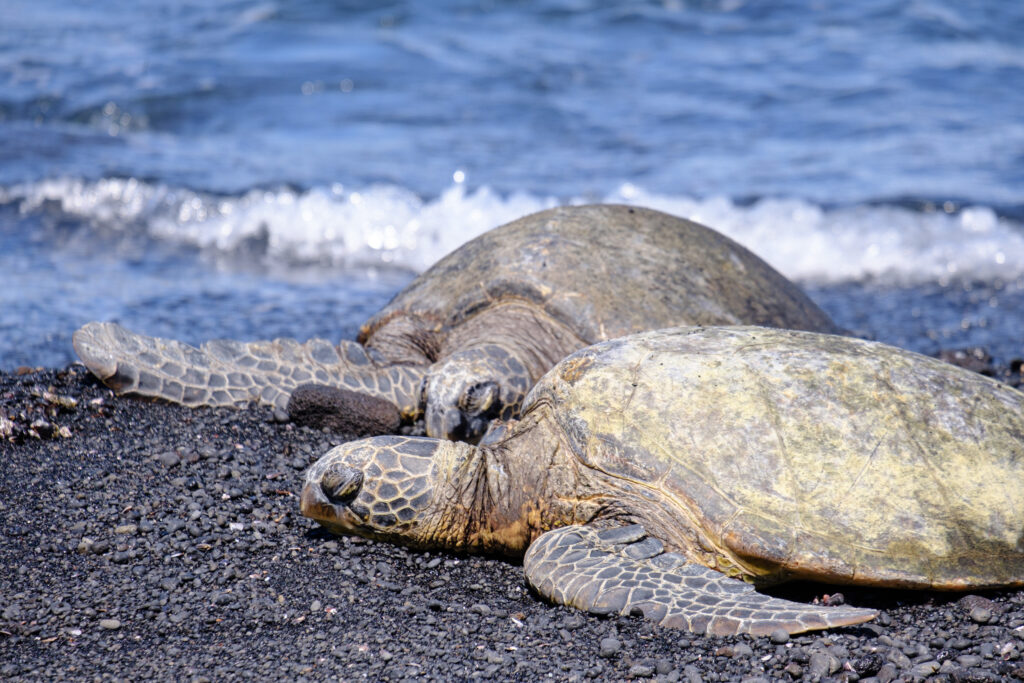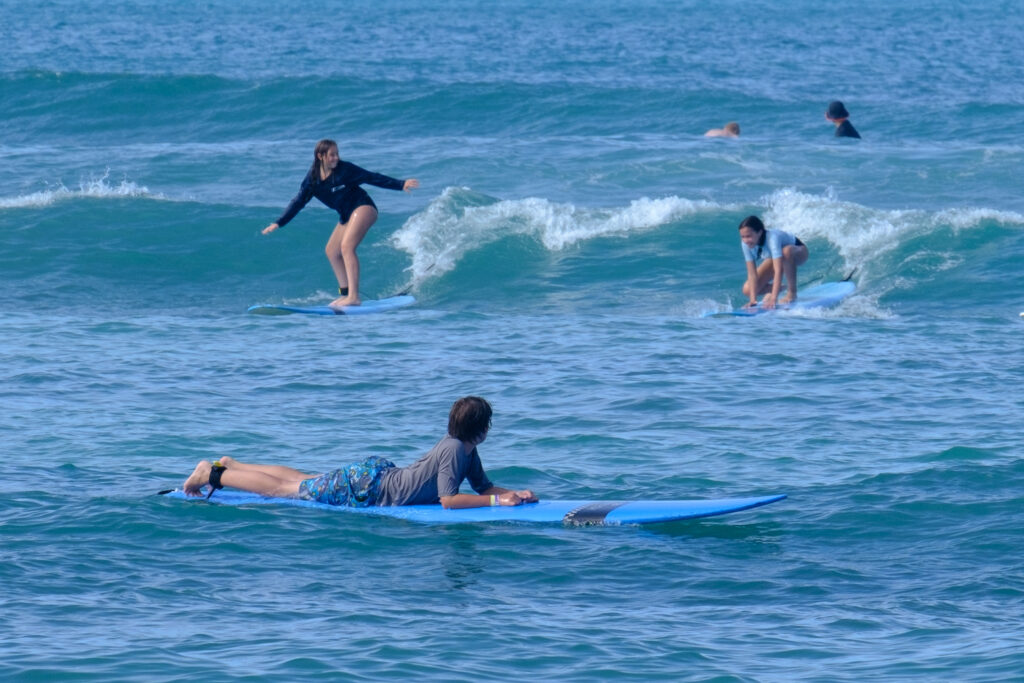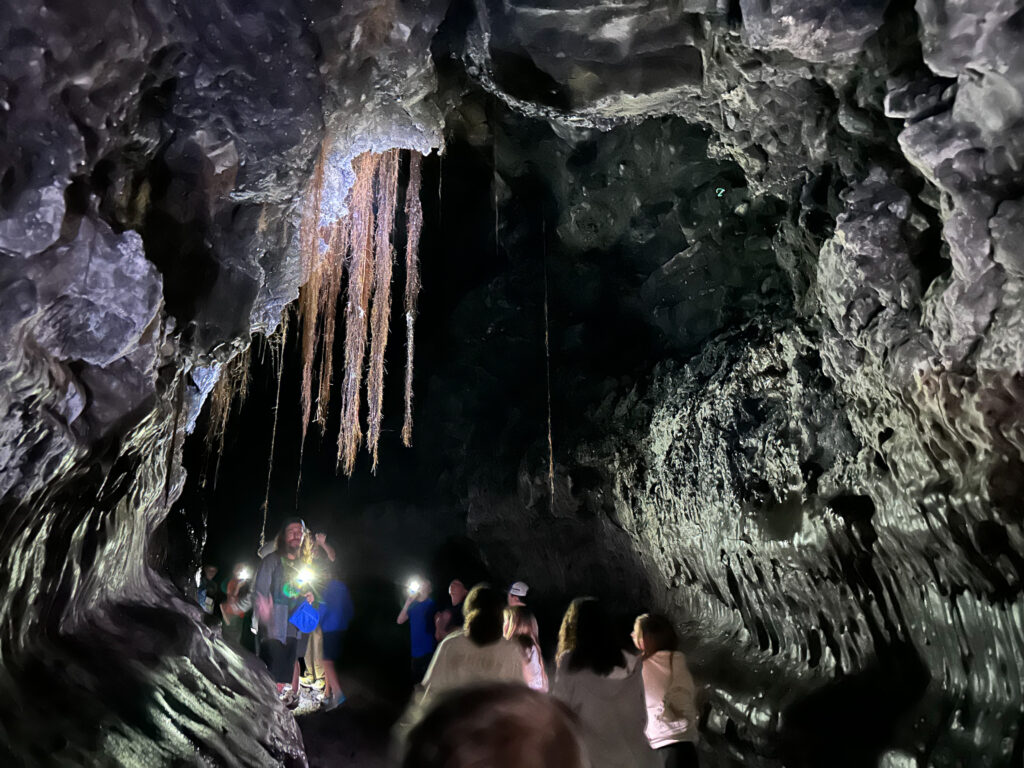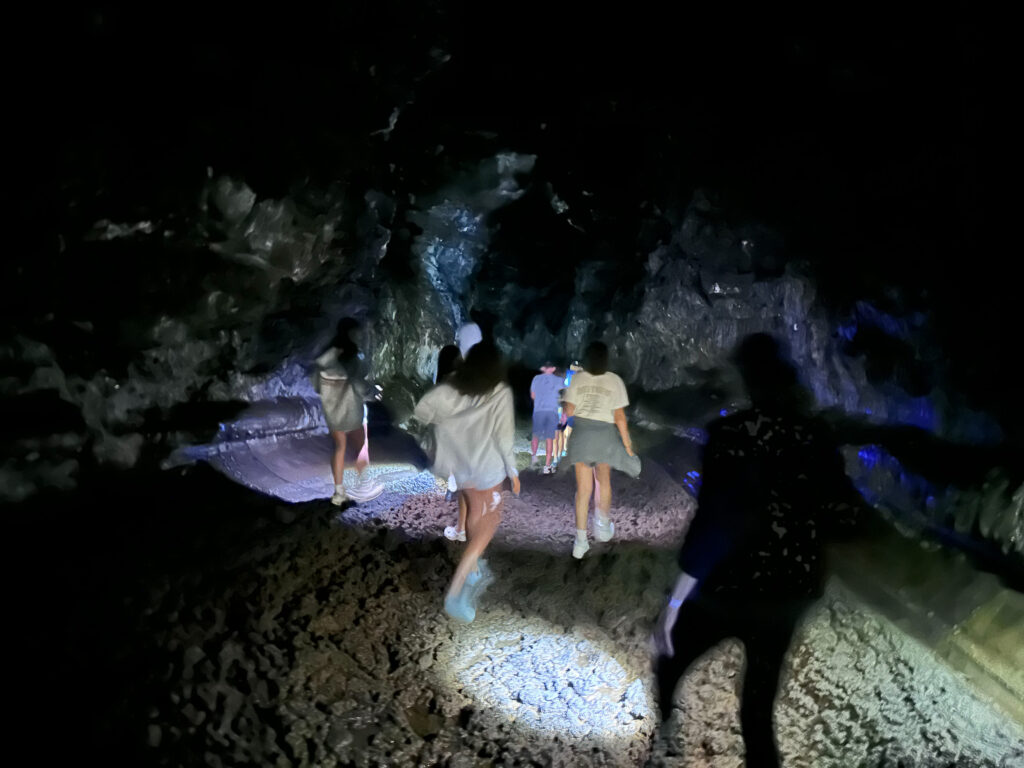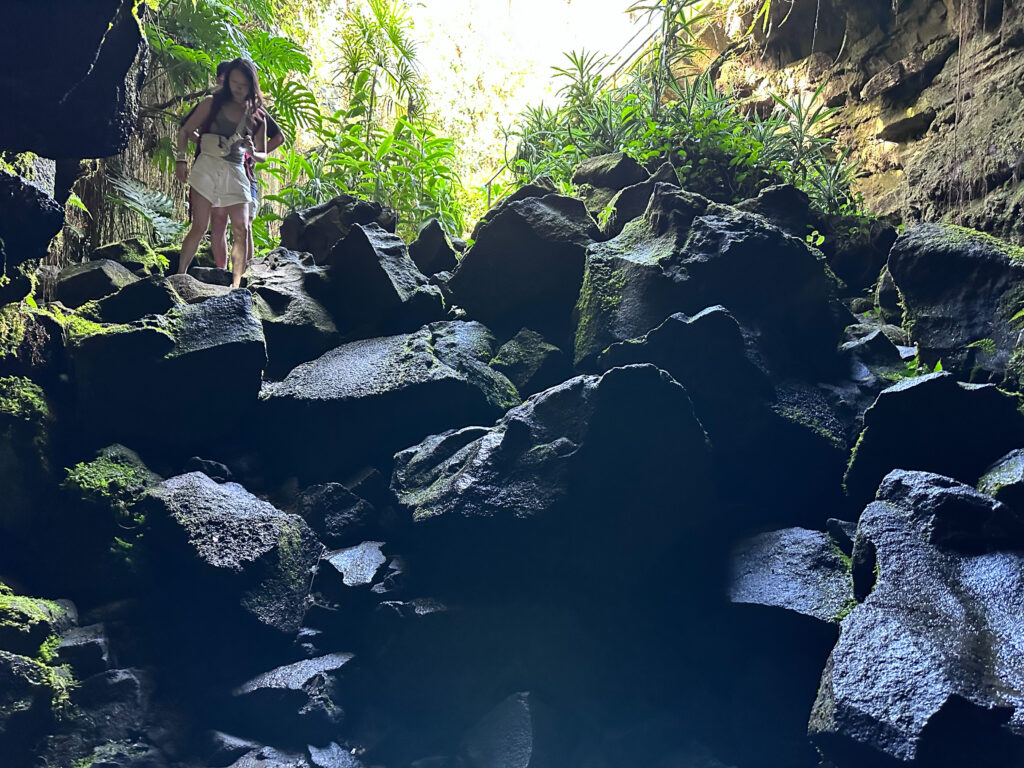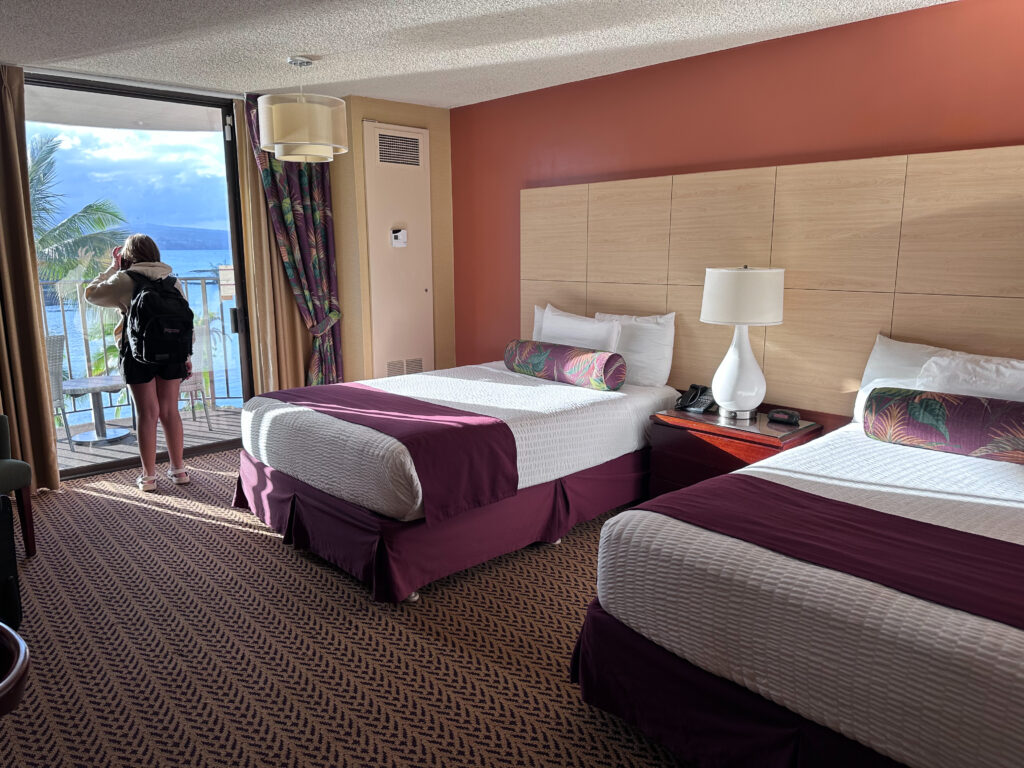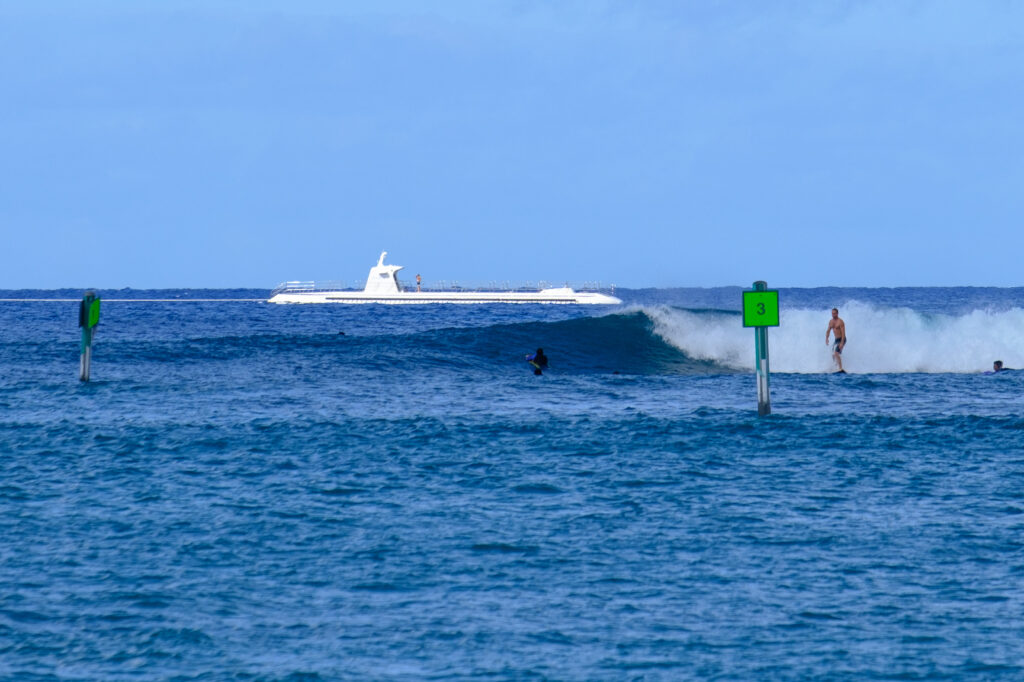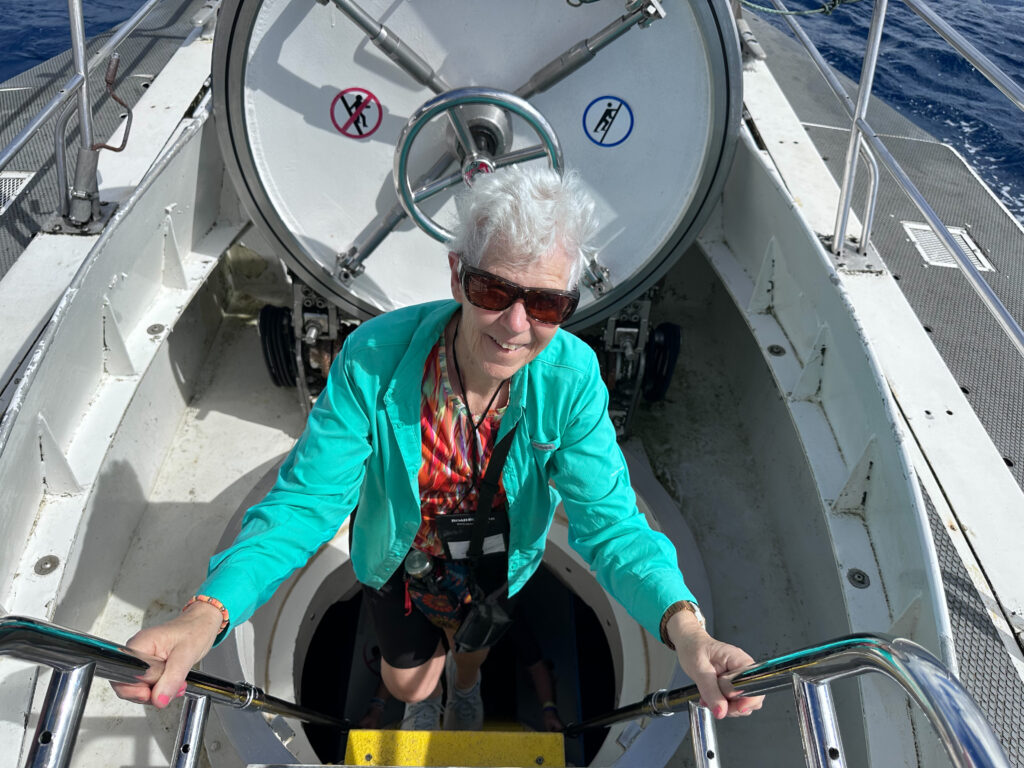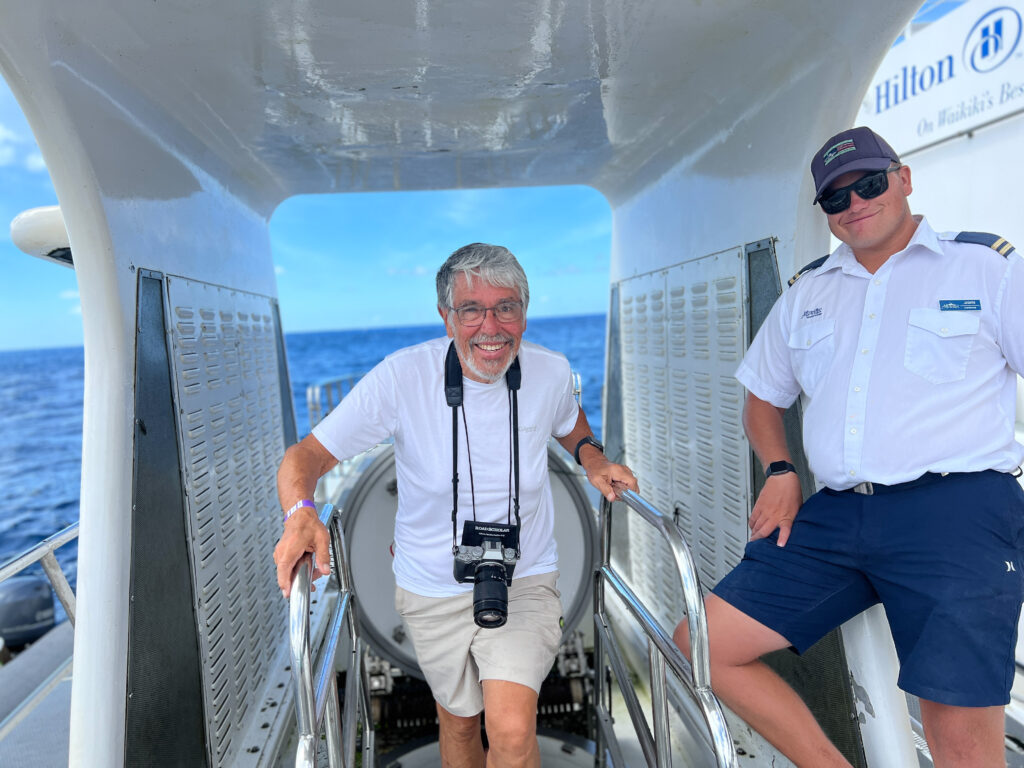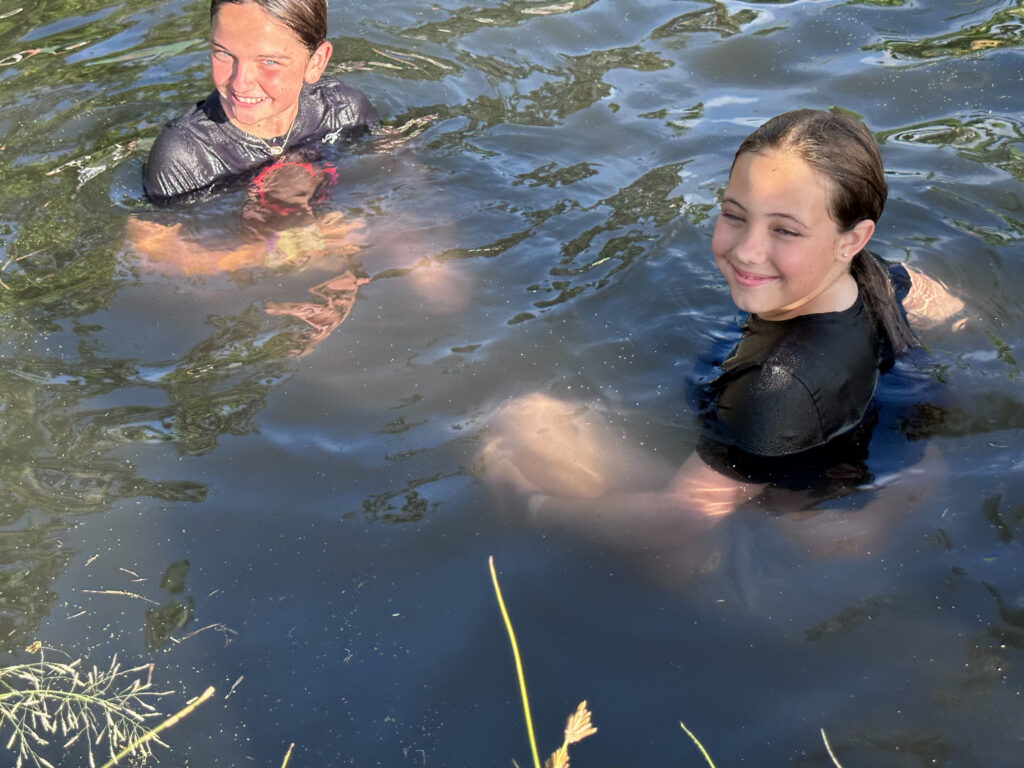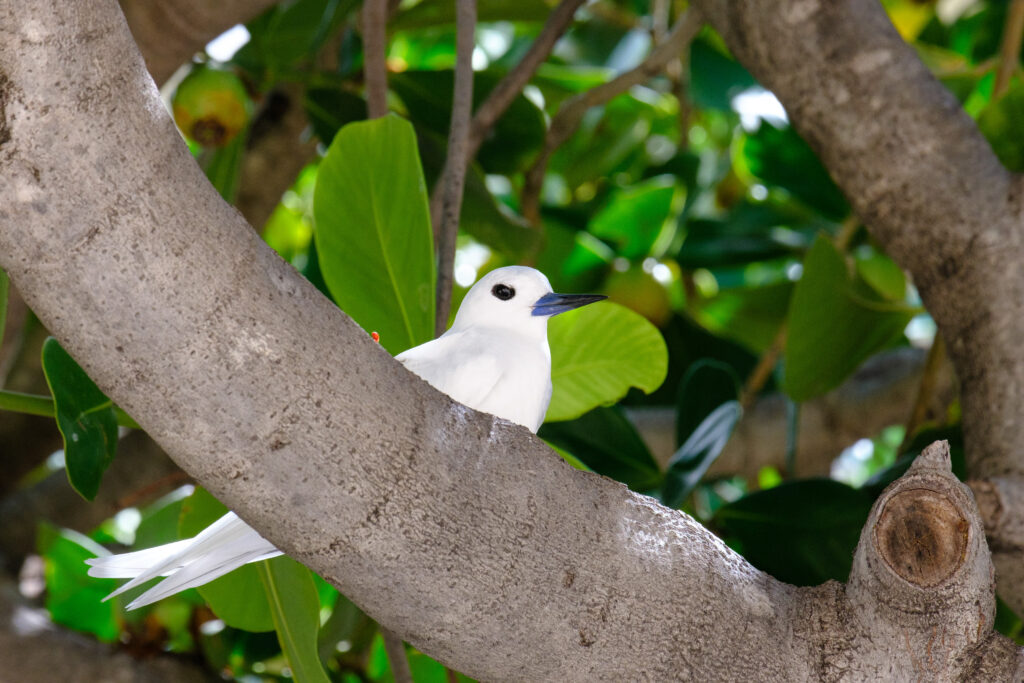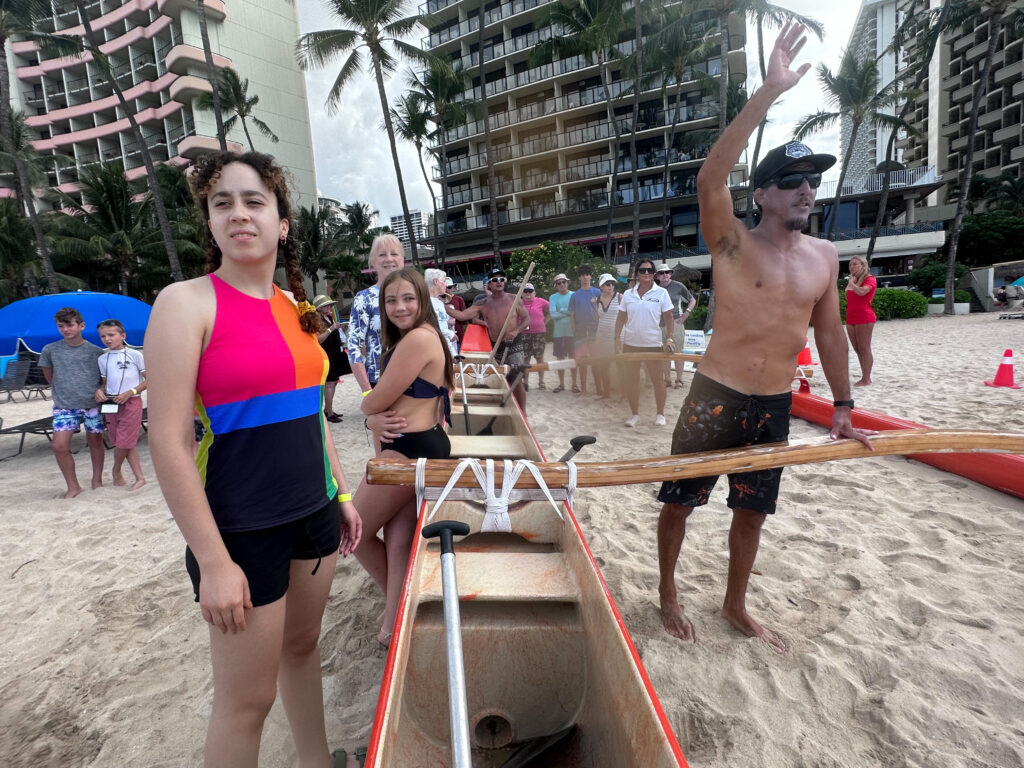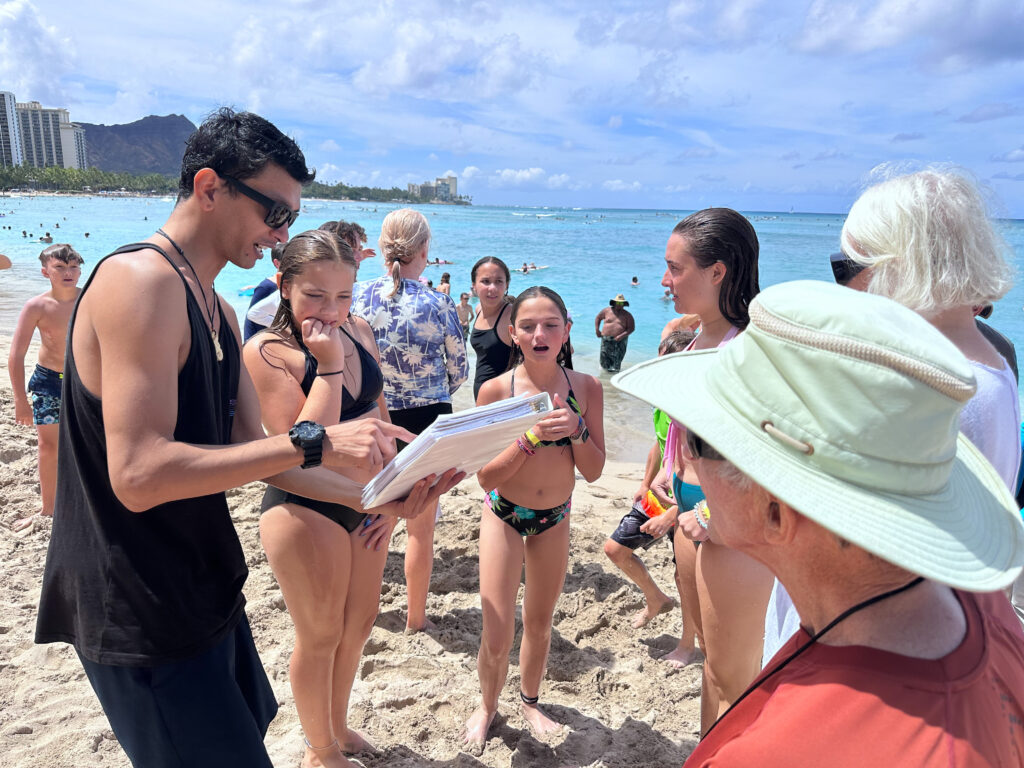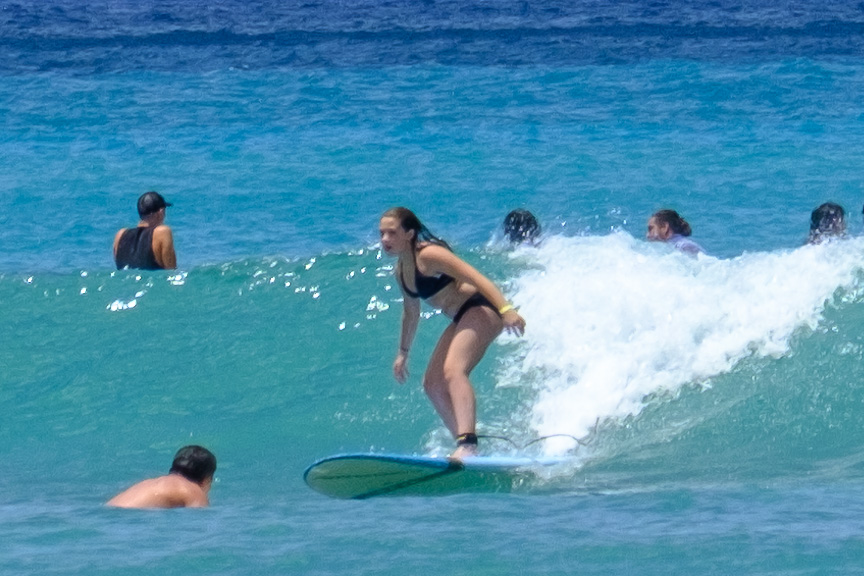It’s no secret that the Hawaiian Island chain is nothing but a series of volcanic eruptions. The volcanoes have, over the past however many tens of millions of years, deposited untold amounts of molten lava to create the islands we enjoy today. There’s another volcanic eruption happening right now. It’s still 3,000 feet or so under the Pacific Ocean surface. In another 10 or 20 thousand years it will reach the surface to form yet another island. But then again, if history is any guide, the current islands will disappear under the surface in another 10 or 20 million years. It’s a process that’s been going on for 100s of millions of years. And of course 100 million years is an eye blink in the 4 billion year history of Planet Earth and 14 billion years since the Big Bang. I told our vulcanologist guide, Cheryl, today that it’s easier for me to understand a trillion dollars than it is to comprehend geological time.
Our day was spent driving south from Hilo along the length of the Big Island’s east coast and then north up the western side to Kona. Kona is actually due west of Hilo and google maps claims it’s a 1.5 hour drive on the direct road. But, hey, we’re on tour and the scenic route through the Hawaii Volcanoes National Park was well worth it.
The volcano we visited was Kilauea, a shield volcano on Mauna Loa’s eastern flank. Mauna Loa is the famous, 13,000 foot volcano that is visible from many parts of the Big Island. The viewpoint we stopped at has a tremendous overlook of the entire Kilauea summit caldera. Within the caldera is the Halema’uma’u crater. This crater was an active lava lake from 2008 through 2018. In May 2018 Kilauea erupted violently, causing significant property damage, filling Hawaii’s largest naturally fed freshwater lake and extending land a mile and a half into the ocean. Kilauea erupted most recently in June of this year. Darn, we missed it.
Incidentally, Mauna Loa is taller than Mount Everest, clocking in at 30,000 feet from base to summit. About 16,000 feet of that total is underwater, so Everest is the tallest if measured from sea level. Speaking of records, Kilauea is one of the most active and largest volcanoes on earth.
The volcanic eruption that made the news last November occurred on Mauna Loa, its first major eruption since 1984.
I’m no expert on volcanoes so I won’t go further for fear of getting it all wrong. But I will say it’s a fascinating subject and seeing it first hand was a real eye opener.
Our guide, Cheryl Giansecki, is a real expert vulcanologist, and gave us an excellent overview. One interesting aspect of her presentation was the impact volcanic activity has on plant life on the surface. Many plant species can’t stand the heat, literally, although some are more hardy than others. Once volcanic activity has completely obliterated an area with lava “pioneer” species, usually small wind born seeds, establish a foothold and over time build the soil that supports other, larger plant species.
After leaving the park we saw continual evidence of volcanic deposits along the highway. We stopped at Punalu’u Black Sand Beach, a striking result of volcanic activity. The black sand is basalt that is created when hot lava hits the ocean, exploding to create the sand. There were five endangered green turtles soaking up the rays while we were there.
Our hotel tonight is on the bay in Kona. Kona is a resort town and hosts a fairly continuous array of cruise ships that disgorge passengers during the day and then sail away to the next port of call that evening. The hotel is nice enough, but we’ll see how the touristy feel works out.
The next three days are dedicated to snorkeling in the morning and free afternoons for us to use as we wish.




